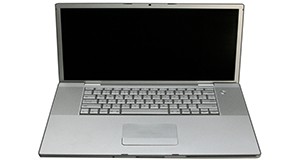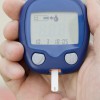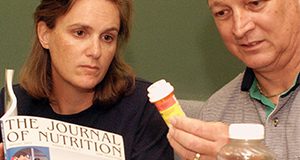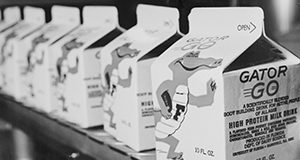Las medicinas nos pueden hacer sentir mejor y mejorar nuestra salud, pero si no las usamos correctamente nos pueden hacer sentir peor o hasta causarnos problemas de salud mayores. This is the Spanish-language version of FCS8594/FY667, Healthy Living: Use Your Medicines Safely! This 5-page document provides tips to help you use your medicines safely. Written by Paulina Wittkowsky, Linda B. Bobroff, and Emily Minton, and published by the UF/IFAS Department of Family, Youth and Community Sciences, revised February 2018.
http://edis.ifas.ufl.edu/fy668
Tag: Vida Saludable series
Vida Saludable: Los alimentos pueden afectar sus medicamentos
Algunos alimentos pueden afectar la manera en que los medicamentos con prescripción o sin prescripción médica funcionan, ya sea retardando, disminuyendo o aumentando la cantidad del medicamento que el cuerpo absorbe. Esto puede ocasionar efectos secundarios peligrosos y no deseados. Written by Paulina Wittkowsky and Linda B. Bobroff, and published by the UF/IFAS Department of Family, Youth and Community Sciences, revised January 2018.
http://edis.ifas.ufl.edu/fy677
Vida Saludable: Diabetes
La diabetes es una condición que ocurre cuando el cuerpo tiene dificultad para producir o utilizar la insulina. La insulina es una hormona que controla la cantidad de glucosa (azúcar) en nuestra sangre, informándole a las células cuanta glucosa pueden dejar entrar. Cuando una persona tiene diabetes, el cuerpo no produce o produce poca insulina, o produce una insulina que no funciona bien. Esto resulta en altos niveles de glucosa en la sangre. Controlar los niveles de glucosa en la sangre reduce el riesgo de otras complicaciones.
This 2-page fact sheet is a major revision that discusses diabetes and management techniques. Written by Linda B. Bobroff and Paulina Wittkowsky, and published by the UF Department of Family, Youth and Community Sciences, revised June 2017.
http://edis.ifas.ufl.edu/fy081
Vida Saludable: Diabetes
La diabetes es una condición en la que el cuerpo tiene dificultad de producir o utilizar la insulina. La insulina es una hormona que controla la cantidad de glucosa (azúcar) en nuestra sangre. Cuando una persona tiene diabetes, el cuerpo no produce insulina o produce muy poca insulina o una insulina que no funciona bien. Esto resulta en altos niveles de glucosa en la sangre.
This 4-page fact sheet is a major revision that discusses diabetes, possible consequences of high blood glucose, risk factors, healthy weights, symptoms, control methods, and ways to choose a healthy diet. Written by Linda B. Bobroff, and published by the UF Department of Family, Youth and Community Sciences, revised October 2016.
http://edis.ifas.ufl.edu/fy079
Vida Saludable: Fuentes de informacion sobre la diabetes
Muchos recursos sobre la diabetes se encuentra en línea.
This 2-page fact sheet provides a list of resources with information on diabetes. Written by Linda B. Bobroff and Paulina Wittkowsky, and published by the UF Department of Family, Youth and Community Sciences, revised August 2015.
http://edis.ifas.ufl.edu/fy083
Vida Saludable: Sitios web confiables
 The number of resources available online grows every day. Unfortunately, there are no regulations to ensure that the information on these websites is accurate. Older adults can readily access reliable information on the Internet by focusing on government and education sites. This 3-page fact sheet is a major revision of the Spanish version of FCS-8587, Healthy Living: Reliable Websites. It provides a list of trustworthy Internet sources related to nutrition, health, food safety, and general interest for older adults. Written by Linda B. Bobroff and Leigh Ann Martin, and published by the UF Department of Family, Youth and Community Sciences, revised November 2015.
The number of resources available online grows every day. Unfortunately, there are no regulations to ensure that the information on these websites is accurate. Older adults can readily access reliable information on the Internet by focusing on government and education sites. This 3-page fact sheet is a major revision of the Spanish version of FCS-8587, Healthy Living: Reliable Websites. It provides a list of trustworthy Internet sources related to nutrition, health, food safety, and general interest for older adults. Written by Linda B. Bobroff and Leigh Ann Martin, and published by the UF Department of Family, Youth and Community Sciences, revised November 2015.
http://edis.ifas.ufl.edu/fy103
Vida Saludable: Examinando el nivel de glucosa en la sangre
 Examinar el nivel de glucosa en su sangre es una parte importante en el manejo de la diabetes. El conocer los valores de glucosa en su sangre le indica que tan eficiente está funcionando su plan de cuidado y si debe hacer algún cambio. ¡Continúe leyendo para aprender más!
Examinar el nivel de glucosa en su sangre es una parte importante en el manejo de la diabetes. El conocer los valores de glucosa en su sangre le indica que tan eficiente está funcionando su plan de cuidado y si debe hacer algún cambio. ¡Continúe leyendo para aprender más!
This 4-page fact sheet is the Spanish language version of Healthy Living: Checking Blood Glucose. Written by Jennifer Hillan and Linda B. Bobroff, and published by the UF Department of Family Youth and Community Sciences, January 2015. (Photo: iStock/Thinkstock.com)
http://edis.ifas.ufl.edu/fy908
Vida Saludable: DETERMINE su salud nutricional (FCS8547Span/FY1326)
 Muchas veces se ignoran indicadores que muestran que nuestra salud nutricional es deficiente. Este documento ofrece una lista para saber si usted o alguien que usted cuida esta en riesgo nutricional y explica cada indicador de una salud nutricional pobre o mala. This 4-page fact sheet was written by Linda B. Bobroff, and published by the UF Department of Family Youth and Community Sciences, April 2012.
Muchas veces se ignoran indicadores que muestran que nuestra salud nutricional es deficiente. Este documento ofrece una lista para saber si usted o alguien que usted cuida esta en riesgo nutricional y explica cada indicador de una salud nutricional pobre o mala. This 4-page fact sheet was written by Linda B. Bobroff, and published by the UF Department of Family Youth and Community Sciences, April 2012.
http://edis.ifas.ufl.edu/fy1326
Vida Saludable: ¿Padecerá Usted de la Diabetes? (FCS8573Span/FY077)
 Millones de estadounidenses padecen de diabetes y ni siquiera lo saben. Conteste este cuestionario para saber si usted está en riesgo de padecer de diabetes.
Millones de estadounidenses padecen de diabetes y ni siquiera lo saben. Conteste este cuestionario para saber si usted está en riesgo de padecer de diabetes.
This 1-page fact sheet is the Spanish language version of “Healthy Living: Are You At Risk for Diabetes?” It was written by Linda B. Bobroff y Paulina Wittkowsky, and published by the UF Department of Family Youth and Community Sciences, March 2012.
http://edis.ifas.ufl.edu/fy077
Vida Saludable: Hiperglicemia e Hipoglicemia (FCS8820Span/FY911)
 Si usted padece de diabetes, de vez en cuando puede tener niveles bajos de glucosa en la sangre (hipoglicemia) o niveles altos de glucosa en la sangre (hiperglicemia). Ambas condiciones pueden ser serias si no son tratadas. Por eso es importante aprender sobre la hipoglicemia y la hiperglicemia para que pueda prevenirlas y tratarlas antes de que estas causen problemas adicionales en su salud.
Si usted padece de diabetes, de vez en cuando puede tener niveles bajos de glucosa en la sangre (hipoglicemia) o niveles altos de glucosa en la sangre (hiperglicemia). Ambas condiciones pueden ser serias si no son tratadas. Por eso es importante aprender sobre la hipoglicemia y la hiperglicemia para que pueda prevenirlas y tratarlas antes de que estas causen problemas adicionales en su salud.
This 2-page fact sheet is the Spanish language version of Healthy Living: Hyperglycemia and Hypoglycemia. It was written by Jennifer Hillan and Emily Minton, and published by the UF Department of Family Youth and Community Sciences, September 2011.
http://edis.ifas.ufl.edu/fy911
Vida Saludable: Ejercicio y diabetes (FCS8613Span/FY670)
 El ejercicio es una de las mejores cosas que se pueden hacer para cuidar su salud. El ejercicio puede ayudarle a controlar los niveles de azúcar en la sangre, reducir la grasa corporal y disminuir los riesgos de enfermedades del corazón. A continuación les ofrecemos unos consejos para ayudarles a empezar un programa de ejercicio divertido y saludable. ¡Empiece hoy!
El ejercicio es una de las mejores cosas que se pueden hacer para cuidar su salud. El ejercicio puede ayudarle a controlar los niveles de azúcar en la sangre, reducir la grasa corporal y disminuir los riesgos de enfermedades del corazón. A continuación les ofrecemos unos consejos para ayudarles a empezar un programa de ejercicio divertido y saludable. ¡Empiece hoy!
This 2-page fact sheet is the Spanish language version of Healthy Living: Exercise and Diabetes. It was written by Sergio Romero and Linda B. Bobroff, and published by the UF Department of Family Youth and Community Sciences, December 2011.
http://edis.ifas.ufl.edu/fy670
Vida Saludable: Manteniéndose regular (FCS8570Span/FY073)

Que se le mueva el intestino menos de tres veces por semana es considerado estreñimiento. Esta afección es muy común en personas mayores de 65 años. Con el paso del tiempo, el estreñimiento crónico puede causar serios y dolorosos síntomas como las hemorroides y la enfermedad de los divertículos. This 3-page fact sheet is the Spanish language version of “Healthy Living: Staying Regular.” It describes causes, prevention, and high fiber foods. Written by Linda B. Bobroff and Luisa Oliver-Cordero, and published by the UF Department of Family Youth and Community Sciences, October 2011.
http://edis.ifas.ufl.edu/fy073
Vida Saludable: ¿Que son las medicinas? (FCS8855Span/FY1037)
 This 1-page handout is the Spanish language version of “Healthy Living: What Are Medicines? Word Search,” written by Karla P. Shelnutt, and published by the UF Department of Family Youth and Community Sciences, September 2011.
This 1-page handout is the Spanish language version of “Healthy Living: What Are Medicines? Word Search,” written by Karla P. Shelnutt, and published by the UF Department of Family Youth and Community Sciences, September 2011.
http://edis.ifas.ufl.edu/fy1037
Vida Saludable: ¡Reconozca el fraude! (FCS8585Span/FY097)
 This 1-page handout is the Spanish language version of “Healthy Living for Elders: Spotting Quackery Word Search,” written by Jennifer Hillan and Linda B. Bobroff, and published by the UF Department of Family Youth and Community Sciences, September 2011.
This 1-page handout is the Spanish language version of “Healthy Living for Elders: Spotting Quackery Word Search,” written by Jennifer Hillan and Linda B. Bobroff, and published by the UF Department of Family Youth and Community Sciences, September 2011.
http://edis.ifas.ufl.edu/fy097
Vida Saludable: ¿Qué conoce sobre la diabetes? (FCS8578Span/FY087)
Test your knowlege about diabetes with a simple crossword puzzle. This 1-page Spanish-language handout was written by Linda B. Bobroff, and published by the UF Department of Family Youth and Community Sciences, May 2011.
http://edis.ifas.ufl.edu/fy087
Vida Saludable: Diabetes (FCS8574Span/FY079)
Diabetes is a condition in which the body has difficulty making or using insulin. This revised Spanish language 3-page fact sheet answers basic questions about diabetes, and was written by Linda B. Bobroff, Karla P. Shelnutt, and Paulina Wittkowsky, and published by the UF Department of Family Youth and Community Sciences, March 2011.
http://edis.ifas.ufl.edu/fy079
Vida Saludable: Juego de letras sobre una variedad de alimentos (FCS8615Span/FY673)
Ordene las letras para escribir los nombres de algunos alimentos que sirven de opciones inteligentes para tener buena salud. ¡Después coloque cada una de las letras enumeradas en los espacios indicados para descifrar el mensaje! This 1-page handout was written by Linda B. Bobroff, and published by the UF Department of Family Youth and Community Sciences, December 2010.
http://edis.ifas.ufl.edu/fy673
Vida Saludable: Cuidándose de la cabeza a los pies (FCS8821Span/FY912)
Si usted padece de diabetes, ponga especial atención a su piel, sus ojos, sus dientes, sus encías y sus pies. Estas áreas están en alto riesgo de complicaciones debido a la diabetes. ¡Lea la siguiente información para aprender cómo cuidar su cuerpo de la cabeza a los pies!
This 2-page fact sheet was written by Jennifer Hillan and Emily Minton, and published by the UF Department of Family Youth and Community Sciences, February 2011.
http://edis.ifas.ufl.edu/fy912
Vida Saludable: Examinando el nivel de glucosa en la sangre (FCS8811Span/FY908)
Examinar el nivel de glucosa en su sangre es una parte importante en el manejo de la diabetes. El conocer los valores de glucosa en su sangre le indica que tan eficiente está funcionando su plan de cuidado y si debe hacer algún cambio. This 2-page fact sheet was written by Jennifer Hillan and Linda B. Bobroff, and published by the UF Department of Family Youth and Community Sciences, February 2011.
http://edis.ifas.ufl.edu/fy908
Vida Saludable: Señales de advertencia sobre la diabetes (FCS8577Span/FY085)
¿Podría usted padecer de diabetes y no saberlo? Es posible. ¡Cerca de un cuarto de personas que padecen de diabetes no saben que tienen esta enfermedad!
This 1-page handout is the Spanish language version of FCS8577/FY084: Healthy Living: Diabetes Warning Signs. It was written by Linda B. Bobroff, and published by the UF Department of Family Youth and Community Sciences, February 2011.
http://edis.ifas.ufl.edu/fy085



